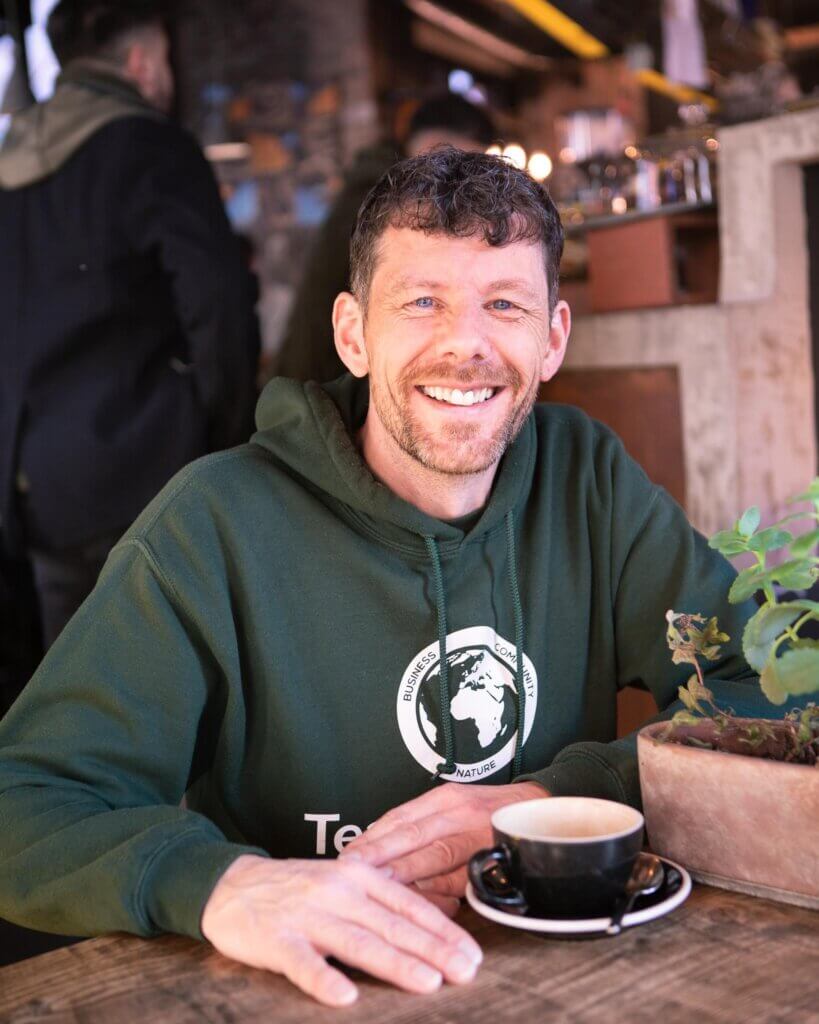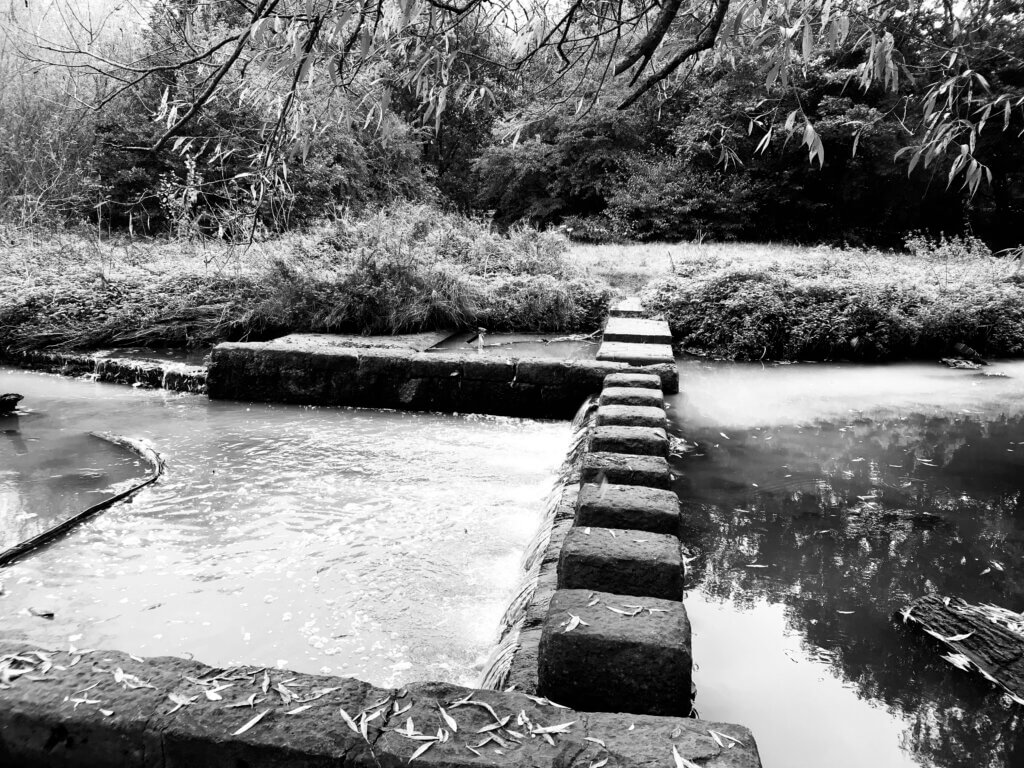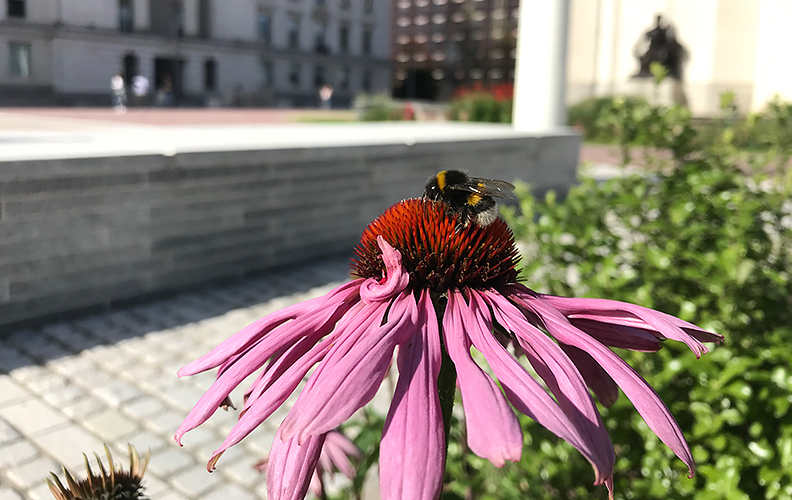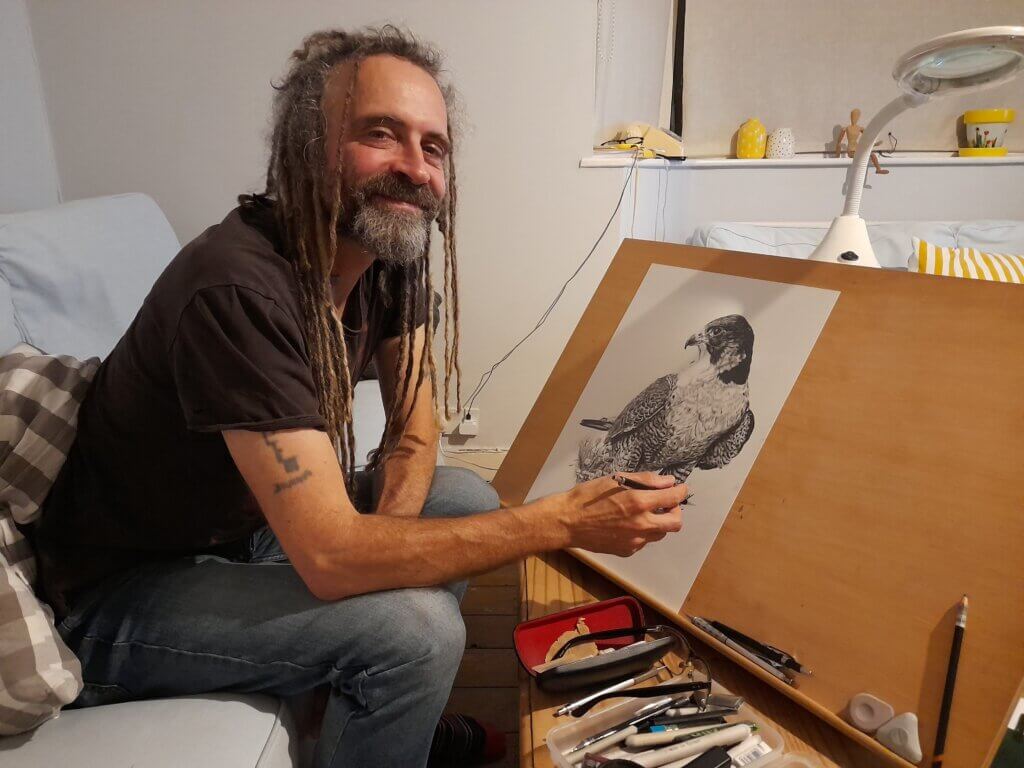
Chris Millward was born in Birmingham, grew up watching wildlife in South Staffordshire and, after reading the 2013 State of Nature report, founded Team4Nature which does exactly what it says on the tin!
I was five years old and playing in my back garden. I must have had my fill of playing with “Humpty Dumpty” and got bored with my pedal-powered racing car. It was time to explore the world beyond my back gate!

After a short distance, I discovered the River Cole. I remember throwing grass and sticks into the water and watching them float downstream. Then it happened; I heard a loud, repeated sound. Every time I heard it, I turned my focus to where the call had come from. Whatever was creating the sound was travelling fast towards me!
Then, I saw it and my little heart raced. A flash of bright blue and orange, turned just yards away from me and headed back along the river towards Sarehole Mill. This was the moment that I fell in love with the natural world.
I had to draw it and I had to find out more about it! My Nan helped me discover that this amazing creature was a Kingfisher! She saw that something powerful had stirred inside me and, with love and patience she started taking me on trips along the Cole and to wonderful places like Cannon Hill Park, Moseley Bog and Swanshurst Park in the Hall Green area of Birmingham.
I moved away from the city and into an area of countryside near Cannock in Staffordshire when I was six. At the end of our cul-de-sac lay paradise; over a thousand acres of farmland, spoil heaps, wet meadow and coppices, waiting to be explored. It was the late 1970s, when I was old enough to explore the land beyond my home-field (where I had already made friends with our local hedgehogs, foxes, pointed-nosed mice and a bright yellow bird that looked like my aunt’s budgie!).
During an early visit, I looked up into an oak tree, probably to assess whether I could climb it, straight into the eyes of a wonderful and comical little creature. As we stared at each other, it began to bob and turn its head round full circle. My whole body was tingling with excitement and after the prolonged encounter I ran back to my Collins book of world animals to find out what I had seen; Pygmy Owl!!
I had a deep connection with my grandparents. My nan nurtured my passion for nature, whilst grandad was the gadget-man and joker. He had given me my first little blue portable radio to feed my passion for music and radio Luxembourg. I loved him and his comedy, but the greatest physical gift that he gave me was a pair of 10×50 second-hand binoculars. They were so heavy, but it was well-worth the struggle and I remember the uncontrollable excitement the first time that I took them out into my magical world at “Kingswood”. Every time I used them, I remember my grandad’s caring words; “don’t look at the sun”. I was now also equipped with a Hamlyn guide to birds of Britain and Europe. I was able to discover that my “Pygmy Owl” was in fact a Little Owl!
The only problem was that there were so many birds in the field guide to choose from!
One morning I found a sandy-coloured bird on the seat of an abandoned tractor! After using my grandad’s humour and thinking “It’s going to drive off on that tractor”, I sat on the bank and opened my guide. Eventually, I reached my conclusion; it was a Cream-coloured Courser! It looked similar and must have got lost, because I hadn’t seen it on my land before! The joys of self-taught birding at an early age!
I needed a mentor and it came in the shape of my form tutor and science teacher Mr Garfield. Like my grandparents, he spotted my passion and told me about the Young Ornithologists’ Club (YOC).
I was now armed with knowledge! I learned to look at the size of a bird, its behaviour, where I had found it and the time of year. I honed these skills and was quickly able to master identification of the seventy or so regular bird species that visited Kingswood.
I was in tune with nature and boy did it feel good! I knew to approach the cereal fields quietly so that I could watch the covey of Grey Partridge feeding, rather than flying off. I became aware that I had Willow Tit and Marsh Tit on my patch, the former being more widespread, whilst the latter could only be found in the one drier area of oak woodland. I instinctively knew, to head to the disturbed ground and ditches on the edge of a new open-cast mine and nearby wet meadow at certain times in Spring and Autumn to find, Little-ringed Plover, Green sandpiper, Whinchat, Stonechat and dozens of Wheatear (this was the species that I had thought was going to drive off on the tractor when I was younger!).
The West Midland Bird Club, sign-posted by the YOC, was now the corner-stone of my birding. Support, reports, field trips and visits to their wonderful reserves allowed me to discover the world of birds beyond my patch. To this end I am eternally grateful to Graham Evans. He still doesn’t know it, and we only met occasionally, but he was my mentor and, alongside my father’s immense strength, gave me the confidence that I hold today. Graham would probably only remember me as the youngest person on the coach to Point of Ayr or, perhaps for the letter that I wrote, to which he kindly replied. Thank you Graham!
Then came the inevitable; adulthood, breaking out into the world from a strict catholic upbringing, student-life in Sheffield, settling down young, the loss of a child, divorce and single-parenting took me away from nature, probably at times when I needed it most!
I still managed to fuel my love of nature, mainly through day-trips with my son, but for two decades, I lost touch with what was happening to the natural world.
Around 2010, I bumped into a wonderful gentleman in Smestow Valley, Wolverhampton; Geoff Russon. He had been watching the area’s birdlife for years and by listening to Geoff during our wonderful walks and analysing the local bird group’s annual reports (prepared by Angus Dickie), I became aware that nature was in serious trouble and something stirred inside me that I hadn’t felt before.
I returned to my childhood patch only to find that many of the species encountered there during my teens were now locally extinct. Despite finding my old friends at the gypsy site, it remained a very sad day indeed. I had to do something to help revive nature, but wasn’t sure what that could be.
The 2013 State of Nature Report brought a sense of real urgency. The report found that one in ten species were at risk of extinction in Britain and 60% of UK species had declined in my life-time.
I contacted NGOs, groups and biodiversity officers across the UK to find out why our wildlife was vanishing at such an alarming rate and what hurdles were preventing its recovery.
The problem appeared simple; humanity has tried to control nature and foolishly divorced itself from the very thing that provides our air, food, water, health and wellbeing.
There appeared to be three hurdles preventing the mass restoration of nature. Firstly, the vast majority of people weren’t aware of the problem. Secondly, those that were aware of the problem often simply didn’t know what to do. Lastly, all the amazing conservation and friends groups across the country were so busy doing their work that they didn’t have time to promote their activities. They were, after all, volunteers, achieving great things, whilst trying to balance other areas of life.
Team4Nature was born in February 2014. Whilst experimenting with models and ideas, I decided to test some theories using social media. First, we built a following by informing people as to the state of nature and the need to look after it. Once we had built an audience, we wanted to encourage teamwork whilst sharing ways that individuals could make a difference. It worked a treat!
We now have over 150,000 followers on social media and by way of example, one of our first followers, a dog-walker called Jo, had told us that she was depressed because she loved nature but felt helpless and unable to protect it. I gave a few pointers and asked her to have faith in herself and start using her own power and knowledge. She became a formidable activist, greenspace volunteer and member of several wildlife charities.

Our followers and supporters have worked together to save many wildlife sites from destruction and help conservation charities win over £125,000 in prizes.
I have been so fortunate to connect with hundreds of people, from all positions and walks of life, whilst developing the Team4Nature model.
I now see one word as the solution to the ecological crisis and it fills my heart with hope! Now you probably thought I was going to say “teamwork”, but the seed of teamwork lies in something far, far greater; community!
The Oxford Learner’s Dictionary defines community as “the feeling of sharing things and belonging to a group in the place where you live”.
My definition goes well beyond this and my instinct, love and passion believes it to be the key to a better world. For if we feel a sense of community, we will root ourselves, not only to the ground beneath our feet and each other, but also to the web of life around us. In doing so, regardless of background, we will all become indigenous. Our abusive relationship with nature will be reconciled.
Love and passion flow from community spirit and these are the ingredients needed to heal the world!
With this in mind, I have brought together an exciting project team that includes allotment societies, businesses, community gardeners, conservation groups, food activists, friends groups (through the wonderful Birmingham Open Spaces Forum), historians, journalists, mobile App creators and teachers.
The wonderful Rebecca Bailey is the project’s young ambassador and there will be many young guardians of nature rising to stand alongside her. I am also proud and very fortunate to be working with West Midland Bird Club, almost forty years after the club first influenced my life.

The project is called “Art4Nature” and it aims to reach every neighbourhood across Birmingham, helping to develop community pride and spirit, whilst commemorating the important role green spaces have played in people’s lives across the city during covid-19. The project is graced by the talent and personality of local birder and award-winning artist, Steve Lilly.
If you live, study, volunteer or work in the city, I warmly welcome you to join the project. It includes public polls, which are now open, to find Birmingham’s favourite birds & butterflies.
Even if you have no connections with the UK’s second city, by population, I do hope that you will follow our journey and share this project, using your voice and social media. Our work in Birmingham will lead to networks being launched across the UK.
The Art4Nature Birmingham project page is here.
The project video is here.
You can follow the project on Twitter here.
You can join the project’s Facebook Group here.
We are also launching ten networks across the city of Birmingham. To get involved or join the growing Art4Nature project team, please email: info@team4nature.co.uk,
I wish to end with a personal thank you to Mark Avery. You really are standing up for nature and it’s your courage and passion that inspires so many of us to continue on our journey, no matter what obstacles lie in the way.
[registration_form]
Wonderful! Thank you so much, Chris!
What a fantastic uplifting blog!!! I can personally vouch for the effectiveness of Team4Nature and owe Chris and his colleagues a very sincere debt of gratitude. Along with many other players such as Andrea Goddard and Mark of course they were crucial in getting the Westminster petition for an independent economic study of driven grouse shooting that I’d set up across the 10,000 signature line required for a govt response just days before it closed.
The trolls had been queuing up to give me brief for it failing to do so, very glad to say the pricks ended up with egg on their faces when against their expectations it made it, something I am not averse to reminding them of when the occasion presents itself. The pathetic govt response we got showed it didn’t have any objective basis from which to politically or financially support DGS.
Cheers Chris for all your efforts and you’re also right about Mark a tireless campaigner and brilliant to have on your side, he did a hell of a lot upfront and behind the scenes to help the petition too and I know there’ll be plenty of other people that’ll be able to say the same. All the very best for Team4Nature it’s been a remarkable success already.
Hi Les. Thank you for your kind comment and continued support. By definition “economy” measures how we manage our home and that made your petition very important indeed. It was a duty and pleasure to support it. Some people say that petitions are a waste of time, and yet they have saved many precious wildlife sites, built community and created discussion, which naturally leads to more informed decision making in the future (we hope!). Excellent work Les!
A lovely post. I would like to quote the part about community on our local Transition website, with proper attribution of course, if that is OK. I am currently working on a talk on rewilding ourselves for our local permaculture group and that part on community fits right in. How are we going to save the other inhabitants of this planet unless we re establish connection with ourselves and all our relations?
Good morning Gerald. Thank you for your comment. Yes, you can certainly quote the text and good luck with your talk, which sounds great. Feel free to send details of your transition and permaculture groups to info@team4nature.co.uk and we will raise awareness of these wonderful community actions.